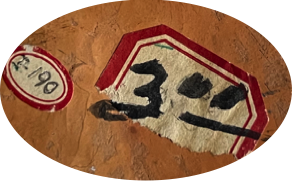
© 2010-2023 by Fine Arts of the Southwest, Inc. All rights reserved.
Unauthorized reproduction or use is strictly prohibited by law.
An exceptionally fine historic Hopi
Sikyatki-Revival style low-profile polychrome pottery "seed" jar by Nampeyo of Hano, c. 1905
ex: Fred Harvey Company Collection
This jar is remarkable for any number of reasons beginning with its lovely, daringly low-profile swooping horizontal shape adapted by Nampeyo and other Hopi potters from ancient 14th-17th century Hopi "Sikyatki Polychrome" type (1375-1625 A.D.) ceramic jars. The bird and feather design motifs were also adapted from Hopi Sikyatki pottery designs made during this time period. This period was the literal "Golden Age" of historic Hopi ceramics where beautifully made and elaborately decorated pottery jars, bowls, canteens and other vessels with wildly unique and complex depictions
of animals, birds, insects, mythical creatures and geometric shapes abounded.
The overall presentation here is rich and complex and masterfully done, fully revealing the incredibly inspired mind
and talented hands of this extraordinary artist. Let’s begin at the beginning, with the gorgeous, dramatic, low-shoulder Sikyatki style shape. Nampeyo didn’t singlehandedly create the Sikyatki pottery Revival at Hopi, but she was a master
at understanding and absorbing its nuances and demanding techniques and she took it to even greater artistic and technical heights than even her ancient forbears did in some ways. The jar is very finely formed; gravity-defyingly low and relatively thin-walled.
The precise long-stroke stone polishing, a telltale Nampeyo characteristic, is beautifully accomplished here and the extremely treacherous to achieve high-temperature Lignite coal-firing, another Nampeyo “signature” is also perfectly achieved here yielding a sumptuous rich yellow-orange color with beautiful lighter yellow firing clouds or "blushes".
"Nampeyo makes her designs after some she has seen on ancient ware."
-Hopi Ethnologist Alexander M. Stephen, 1893
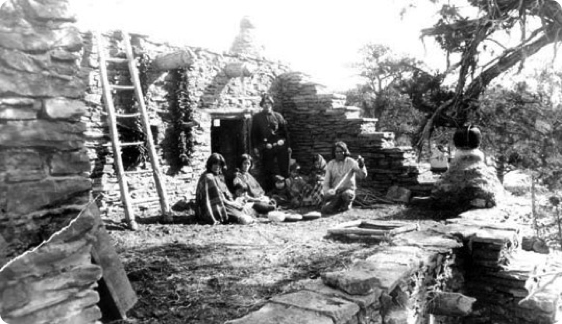
At left, Nampeyo making Sikyatki Revival-style pottery, c. 1905. At right, Nampeyo and her family at The Fred Harvey Company's Hopi House trading post on the South Rim of the Grand Canyon in Arizona, c. 1907.
Left photo source and © Suduva. Right photo source and © The Fred Harvey Company
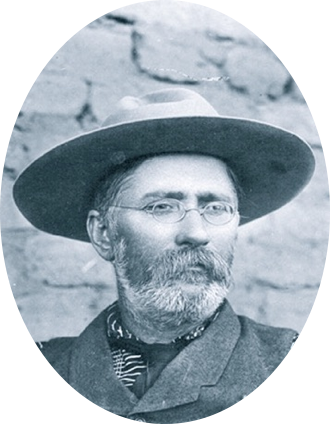
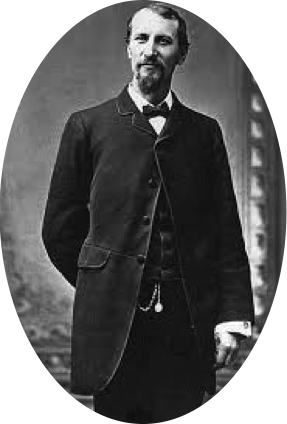
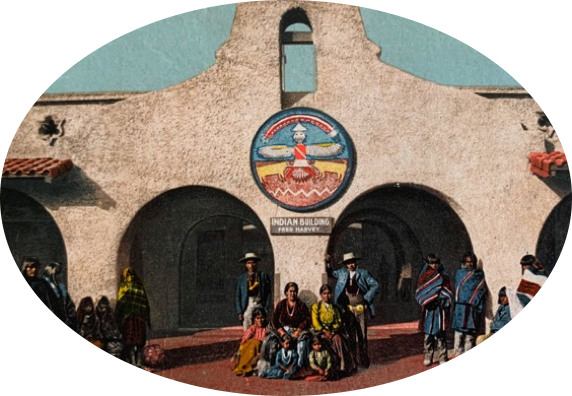
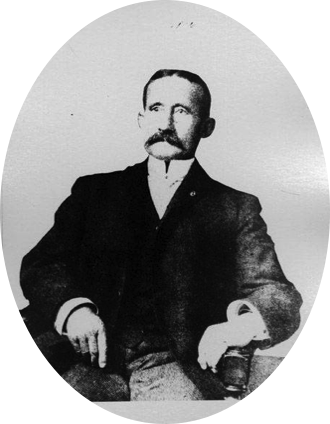
The jar measures a very nicely-sized 8" in diameter and it stands 3" in height. It is in remarkably fine original condition, and particularly so in light of its century-plus nearly twenty years of age. A thorough examination under Ultraviolet light reveals no evidence at all of any restoration or overpainting. The rim is very slightly irregular from the firing and there are a number of tiny inconsequential nicks around the top of the jar’s shoulder and one small gouge in the clay and a small scratch or two here and there but that’s all and for a 120 or so year-old piece that’s more than a little impressive, in fact its fairly remarkable especially when you consider the extremely primitive circumstances under which this jar was made; Nampeyo sitting out on the ground on a blanket in the blazing desert heat or bitter cold using only locally found raw materials; clay, paint, brushes etc. all of which she found, gathered and hand made herself.
And now on to the jar’s excellent provenance; over the course of its 120 or so year lifetime, this jar has passed through some famous hands, beginning of course, with Nampeyo’s. From her, the jar went into the possession of the famous Fred Harvey Company as clearly evidenced by their several old black and red-bordered paper labels affixed to the jar’s bottom, the first of these being Fred Harvey’s characteristic black-bordered "From the hopi villages" tag and the second two being red-bordered price and inventory number tags. The sale or trade of this piece from Nampeyo to Fred Harvey could have happened in any number of ways, Nampeyo could have brought the jar herself to a Fred Harvey Company affiliated trading post, say Thomas Keam’s nearby post in Keam’s Canyon on the eastern edge of Hopiland or to J.L. Hubbell’s post in the nearby railroad town of Winslow, Arizona to sell or trade or one or another of these traders or their agents could have come to her as they did regularly looking for pottery to sell at one of Fred Harvey’s high end trading posts across the region, such as the Hopi House at the Grand Canyon or Albuquerque's Hotel Alvarado.
Either way, the jar was transported from Hopi by buckboard wagon or mule to the purchasing trading post where it was then sold to its new lucky owner after which they then transported their new prize souvenir very likely via a Santa Fe railway train back to its eventual home destination somewhere in the East or Western part of the country. And prized indeed this piece was selling with its hand-written india-ink price tag of $3.00 around 1905. In 1905, three dollars was quite a handsome sum indeed for a piece of Native American pottery; capable of purchasing 22 pounds of high-quality beef steak, 27 bottles of wine, 200 pounds of potatoes, 3 men’s dress shirts or 3 child’s tricycles.
Over the course of the past thirty-five years, we have placed perhaps sixty or seventy top-quality historic Hopi jars by Nampeyo and others in various museums around the country from The Art Institute of Chicago to The Thomas Gilcrease Museum in Tulsa, Oklahoma to the Scottsdale, Arizona Museum of the West. In our view, this unique and striking jar is the artistic, technical and historic equal of any of these pieces, a fully-realized masterwork by the inspired mind and immensely skilled hands of this master artist.
Today, precisely as they did back in 1905 and even more so given the intervening century plus of time and increasing rarity, this jar’s exceptional beauty and skillful artistic manufacture elevate it to the status of a serious artwork.
Price $6,450
At left, Juan Lorenzo (J.L.) Hubbell, c. 1900-1905. At center, Fred Harvey, c. 1885. At right, Thomas Varker Keam, c. 1890.
Left photo source and © National Park Service. Center photo source and © Wikipedia, Right photo source and © Cline Library, NAU, Flagstaff, AZ.
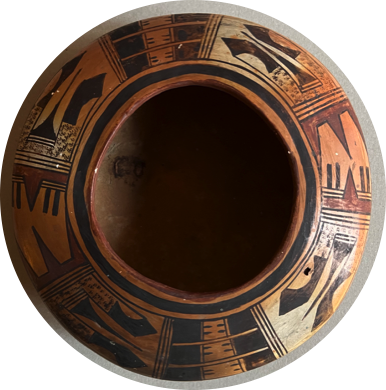
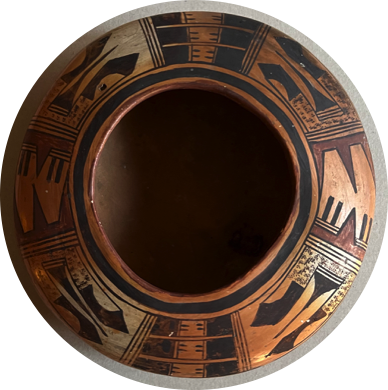
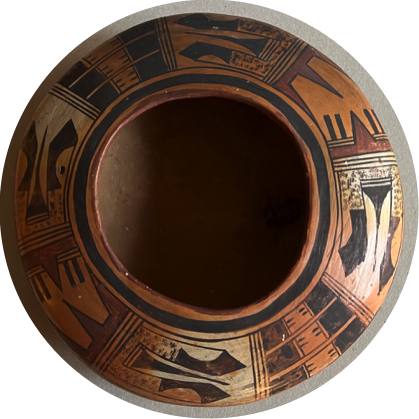
Above center, an original Sikyatki Polychrome “low-profile” jar with feather motifs, c. 1500-1550 A.D.
Photo source and © Bonhams

The overall design is so completely explosive and dynamic it is almost breathtaking; a complex double four-part horizontally-opposed arrangement, a classic Nampeyo layout and presentation rendered in her customary streaky red and rich deep black paints. This arrangement gives the jar’s design a distinct and energetic sense of spinning motion,
as we have previously said in reference to other earlier Nampeyo pieces we have had which have used a similar design arrangement that: “Nampeyo invented the propeller before the Wright Brothers invented the airplane.”
The eight individual panels in the four-part opposed design field are generally symmetrical, but as can be seen here there are charming idiosyncrasies and variations in parts of the designs, within the harmonious and balanced overall design of each panel is a marvelous and complex composition in and of itself with a dynamic sense of overall energy and motion. And every bit of it done according to age-old Hopi tradition straight out of the potter’s imagination, without
the slightest use of any preliminary sketches, templates or studies. Its nothing short of sheer visual genius!!
The jar’s design field covers the entire upper shoulder of the piece starting down from the flat red-painted rim and stops at the mid-body. It features both multiple horizontal renditions of another one of Nampeyo’s distinctive design "signatures", the "Kilroy" or clown face design as well as multiple stylized feather, terrace and other geometric motifs. All told, the jar possesses a distinct "monumentality", which is to say that without a direct visual comparison for
scale, you wouldn’t really know if it was 8",18" or 28" in diameter.
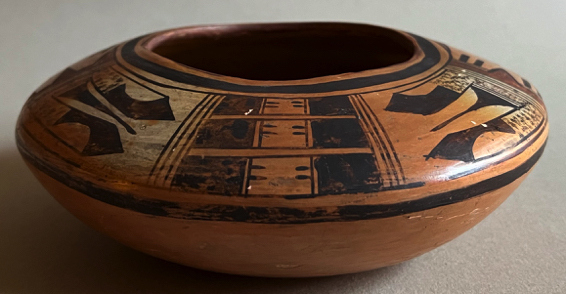
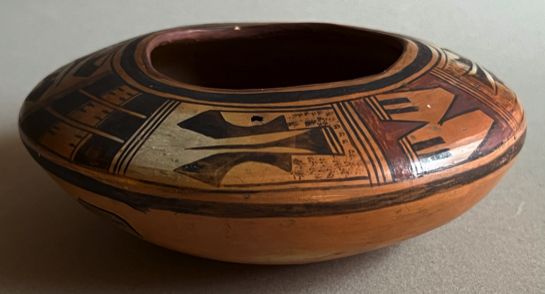
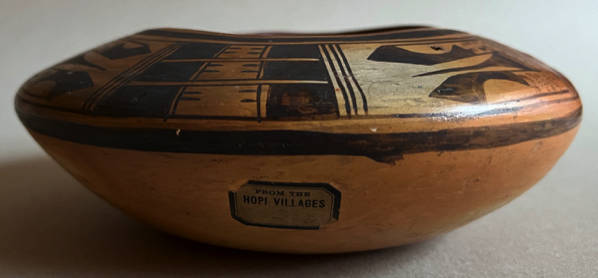
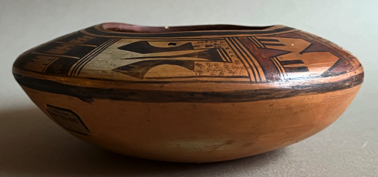
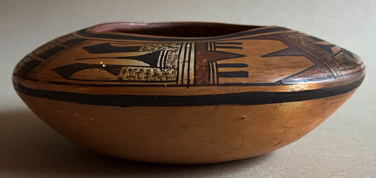
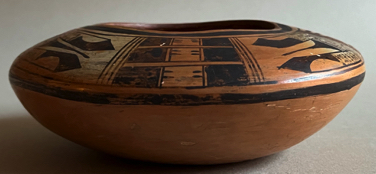
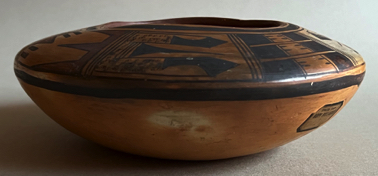
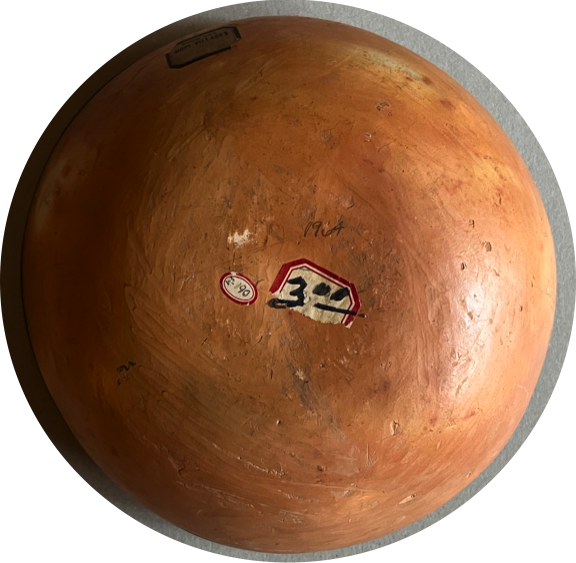
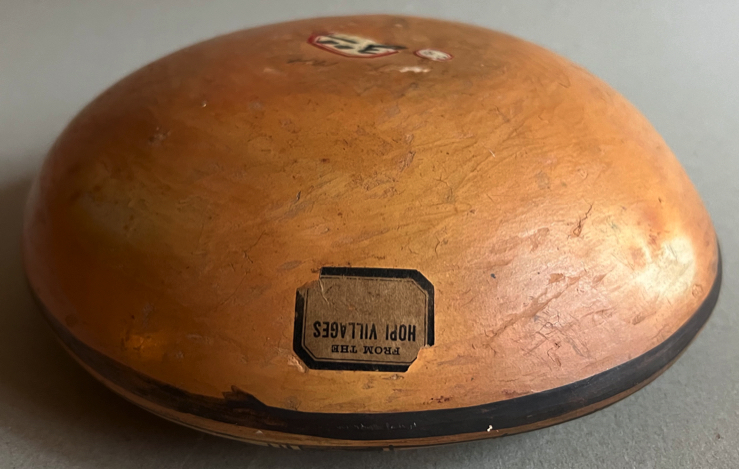
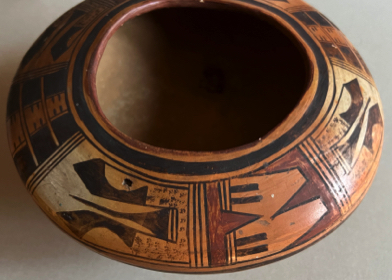
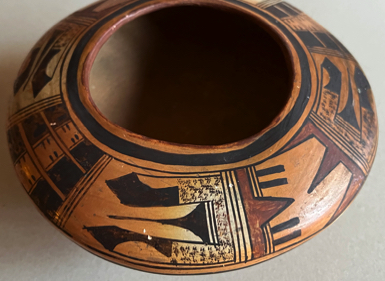
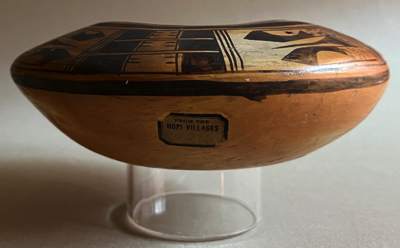
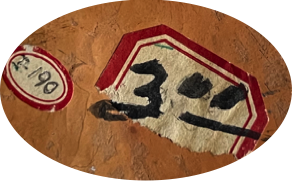
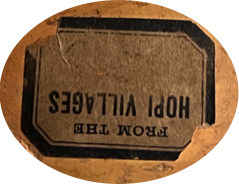
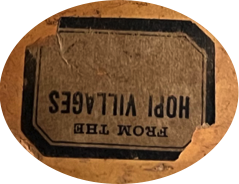
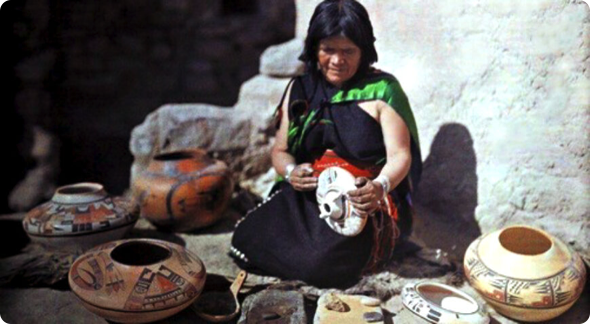
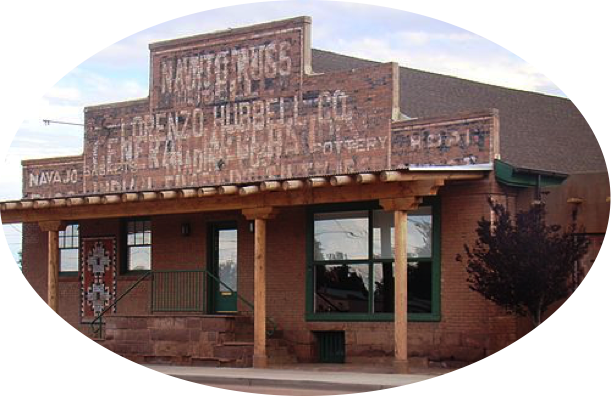
At left, The Fred Harvey Company's Indian Building Trading Post at The Hotel Alvarado, Albuquerque, NM, c. 1906. At right, the old J.L. Hubbell Trading Post in Winslow, AZ.
Left photo source and © The Fred Harvey Company. Right photo source and © Wikipedia.
